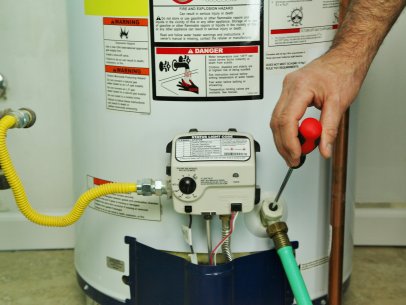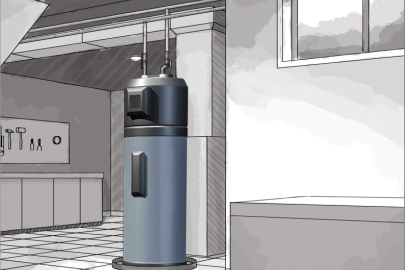Each person is bound to have their own conception in relation to Tips For Maintaining Your Hot Water Heater.

Warm water is vital for daily convenience, whether it's for a refreshing shower or washing meals. To ensure your warm water system runs successfully and lasts longer, normal upkeep is key. This post gives useful pointers and understandings on just how to maintain your home's warm water system to avoid interruptions and pricey repairs.
Introduction
Keeping your home's hot water system may appear difficult, however with a couple of easy actions, you can ensure it operates smoothly for years to find. This overview covers whatever from understanding your hot water system to do it yourself upkeep pointers and knowing when to employ specialist help.
Significance of Preserving Your Warm Water System
Normal maintenance not only extends the life expectancy of your warm water system yet also ensures it runs efficiently. Neglecting maintenance can result in decreased effectiveness, greater power costs, and also early failing of the system.
Signs Your Hot Water System Needs Maintenance
Understanding when your hot water system requires focus can avoid significant concerns. Keep an eye out for indicators such as irregular water temperature level, weird noises from the heater, or rusty water.
Flushing the Water Heater
Flushing your water heater removes sediment buildup, boosting performance and prolonging its life.
Checking and Changing Anode Rods
Anode poles prevent corrosion inside the tank. Evaluating and changing them when broken is critical.
Complex Issues Requiring Specialist Aid
Instances consist of significant leaks, electric troubles, or if your water heater is constantly underperforming.
Regular Expert Maintenance Perks
Specialist upkeep can consist of extensive examinations, tune-ups, and ensuring compliance with security requirements.
Checking and Adjusting Temperature Level Settings
Adjusting the temperature setups guarantees ideal efficiency and safety and security.
Do It Yourself Tips for Upkeep
You can execute several maintenance tasks yourself to keep your hot water system in top condition.
Checking for Leaks
On a regular basis evaluate pipelines and links for leakages, as these can result in water damages and greater costs.
Comprehending Your Hot Water System
Before diving into maintenance tasks, it's helpful to understand the basic parts of your hot water system. Usually, this includes the water heater itself, pipes, anode poles, and temperature level controls.
Regular Monthly Maintenance Tasks
Routine monthly checks can help capture small concerns prior to they intensify.
Testing Stress Alleviation Valves
Evaluating the pressure relief valve guarantees it operates properly and avoids too much stress accumulation.
Protecting Pipes
Insulating warm water pipelines decreases heat loss and can save power.
When to Call an Expert
While DIY maintenance is beneficial, some problems need professional expertise.
Verdict
Routine maintenance of your home's warm water system is crucial for performance, durability, and cost financial savings. By adhering to these suggestions and knowing when to look for professional aid, you can guarantee a trusted supply of hot water without unanticipated interruptions.
Water Heater Maintenance: The Basics
Maintaining your water heater will ensure it operates efficiently and has a longer lifespan. Neglecting regular maintenance can lead to costly repairs and an even bigger chunk of your savings if you have to replace it sooner than necessary. But there’s good news: Most water heater maintenance tasks are relatively simple and easy for homeowners with basic DIY skills.
Flush the Water Heater
Over time, sediment and minerals can build up in the tank, reducing its efficiency and potentially causing damage. To flush the tank, turn off the power or gas supply, attach a hose to the drain valve near the bottom and open the valve to drain the water until it runs clear. Ideally, flush the tank annually.
Replace the Anode Rod
The anode rod is a sacrificial metal rod that helps prevent corrosion inside the tank. Inspect and replace it every three to five years or per the manufacturer's recommendation. To replace the anode rod, turn off the power or gas supply, drain a few gallons of water from the tank, unscrew the old rod and replace it with a new one. If the anode rod is significantly corroded or covered in calcium buildup, it's a sign the water heater may need to be replaced soon.
Tune-Up
A yearly tune-up can help identify potential issues and ensure your water heater operates at peak efficiency. This typically involves checking the thermostat, burner assembly (for gas heaters) and any other components specified by the manufacturer. During a tune-up, the technician may also clean the burner and adjust the pilot light (for gas heaters) or examine the heating elements (for electric heaters).
How to Maintain Your Water Heater
- Insulate the tank. Insulating the tank can improve energy efficiency and reduce heat loss, saving you money on energy bills. You can purchase precut insulation blankets designed specifically for water heaters or use standard fiberglass insulation wrapped securely around the tank.
- Check the temperature. The recommended water temperature for most households is around 120 degrees Fahrenheit (49 degrees Celsius). Higher temperatures can increase energy costs and potentially cause scalding. Use a kitchen thermometer to check the temperature at the faucet nearest the water heater.
- Monitor water pressure. Excessive water pressure can strain the water heater and cause leaks or even tank failure. Install a pressure-reducing valve if necessary. The ideal water pressure range is between 60 and 70 PSI (pounds per square inch).
- Test the temperature and pressure (T&P) relief valve. The T&P relief valve is a safety feature that releases pressure if the tank gets too hot or the pressure builds up too high. Test it annually by lifting the lever and allowing a small amount of water to release. Replace the valve if it doesn't release water or reseal properly.
- Check for leaks. Regularly inspect the tank, pipes and fittings for leaks or corrosion. Deal with issues promptly to prevent further damage. Even a small leak can lead to significant water damage over time.
- Consider a tankless water heater. If your traditional tank-style water heater is nearing the end of its lifespan ( typically 10 years), consider replacing it with a tankless water heater. These units heat water on demand, reducing standby energy losses and potentially saving you money on your energy bills.
- Schedule professional maintenance. While homeowners can perform many water heater maintenance tasks, it's still a good idea to schedule professional maintenance every few years. A plumber or HVAC technician can thoroughly inspect the unit, identify potential issues and ensure it operates safely and efficiently.
https://www.homeserve.com/en-us/blog/home-improvement/hot-water-heater-maintanence/

I discovered that page about What Kind of Maintenance Do Water Heaters Need? while looking around the internet. Enjoyed our content? Please share it. Help others find it. Thanks a bunch for being here. Kindly check our website back soon.
Call Today
Comments on “Important Guidance on Maintaining Your Home's Hot Water SystemWays to Extend the Life of Your Home's Hot Water System By Maintenance”